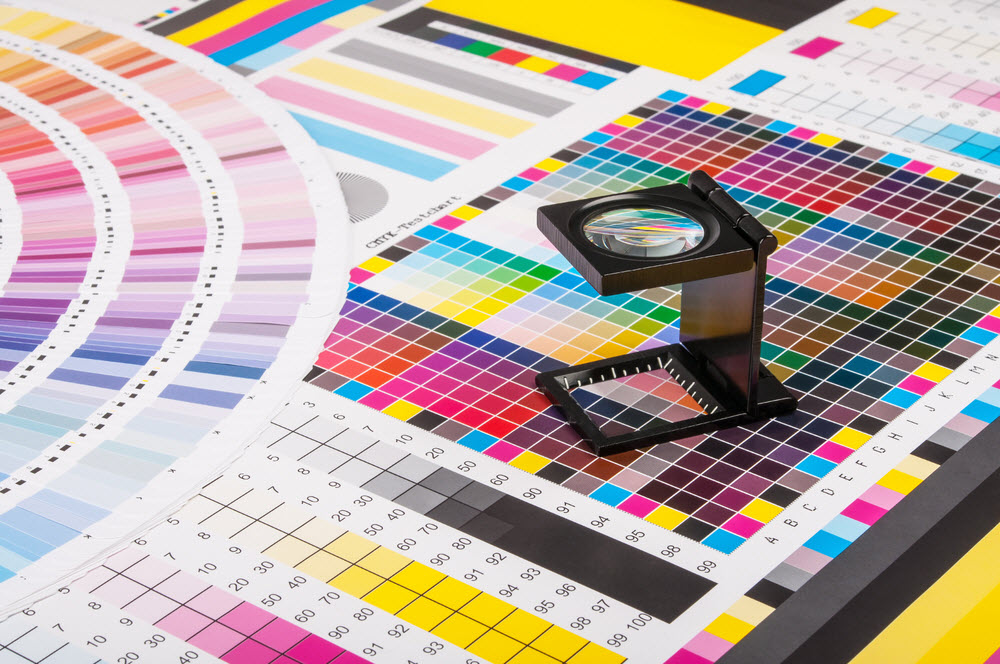How to Choose Between Offset and Digital Printing
- Published: Tuesday, 21 February 2017 09:48
When it comes to professional printing jobs for your business, you have a lot of options to choose from. Two of the most commonly used printing styles are digital printing and offset.
Each method comes with its own benefits and drawbacks, and each is better suited to particular applications. The style you choose will ultimately depend on the job you need done. Here, we'll analyse some of the most common concerns clients have when seeking professional printing and how the two styles differ. This should help guide you in choosing the appropriate printing style for your unique needs.
Time
In offset printing, a plate is required to print each colour and layout, so it takes significantly more initial setup time than digital printing. Because of this, offset printing is better suited to large quantities. Digital printing does not require the use of plates; so small quantities can typically be completed much more quickly.
Order Size
Similarly, offset printing is better for larger orders. With digital printing, you will be charged by the piece, whereas offset printing often comes with more initial set up fees but then gets cheaper the more you order at once. Because of the longer set up times and costs involved with creating the plates for offset printing, digital is typically your best bet for smaller orders. It mostly depends on the actual printed size of the item (e.g. DL, A5, A4, A3) to determine at what exact quantity the price for offset will beat the price for digital.
Colour
Both digital and offset printing can produce documents in full CMYK colour. Anything containing a photo will need to be printed full colour. The four primary inks (cyan, magenta, yellow and black) are mixed in varying ratios on press to achieve most colours in the entire colour spectrum.
Only offset printing can produce spot colour printing. Spot colour inks are professionally mixed to match the international pantone matching system (PMS), much like tins of paint you get from a hardware store. They are mixed and loaded into the press prior to the print run commencing. Most offset presses can only print a maximum of up to five spot colours at a time. This is why it’s impossible to print photo images in spot colour however it makes it ideal for printing business stationery which usually only consists of two to three colours, especially when these colours are intended to be vibrant or metallic. There are some colours like metallic golds or vibrant oranges which just can’t be achieved in CMYK and as the colours are professionally mixed to exacting standards prior to printing it ensures greater consistency throughout and between jobs.
Surprisingly the one colour that can’t be offset printed very well is white but new digital machines are filling this gap with the introduction of a white toner unit. They’ve also added a clear toner unit which allows for a spot gloss or all over varnish. Offset printing can only achieve all over varnish and you would have to add the extra process of foiling or screen printing to achieve a spot gloss effect to a specific area such as your logo.

Consistency
Although digital printing quality has improved by leaps and bounds in recent years, you may still run into some minor issues with colour consistency. If consistency is a major concern, like with business stationery, offset printing will give you the best results.
Additional Features
Some specific applications work best with particular printing styles. For example, if you are looking to print a multi-page brochure or booklet, digital printing is likely to be your best bet. Because each page of the booklet will be different, the high number of plates may be cost prohibitive unless you are printing large quantities. In addition, collating and binding of the book, like saddle stitching or stapling, can be done at the same time as the printing. With offset printing, the collation and binding of the booklet occurs as a separate process, adding time and cost to your order.
However, if you are printing no carbon required (NCR) pads, offset printing is better suited to your needs. This is because the perforation and any numbering can be done at the same time as it is being printed. You'll also achieve greater consistency throughout the book. Because the same image will be printed throughout, the cost of creating the plate is outweighed by its frequency of use.
Making Your Decision
At the end of the day, the style of printing you choose is entirely up to you. We hope that the suggestions and guidelines outlined here help you in making your decision. If you are still unsure, our printing experts will be happy to assist you. Get in touch with us today to learn more about our printing services and how we can help your business with printing services such as notepads, business cards, A Frame signs, signage, Take 5 safety checklists, pull up banners and more.